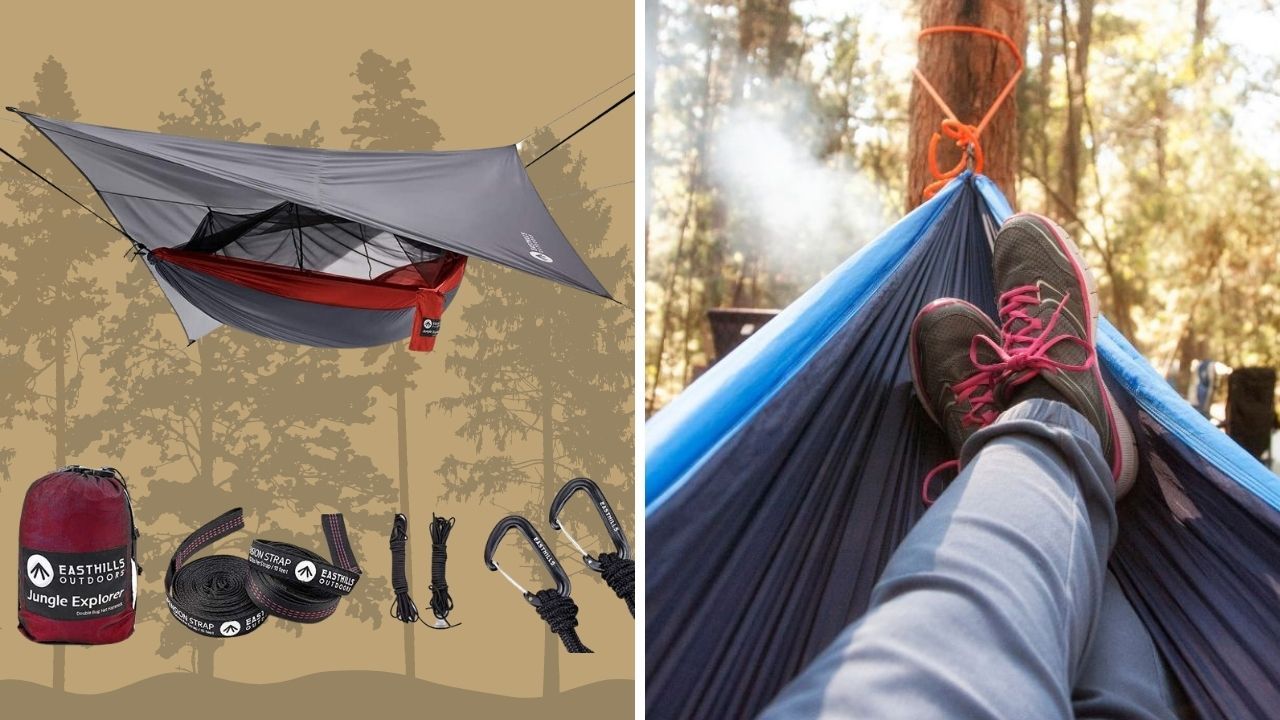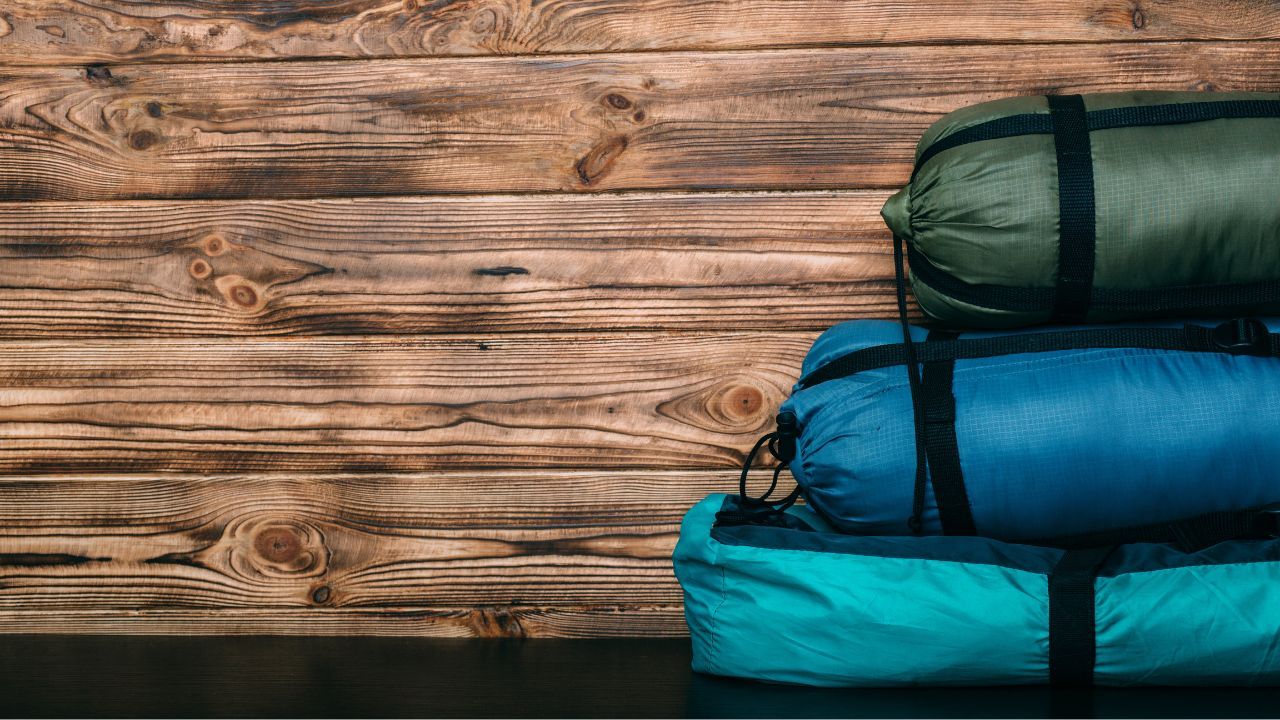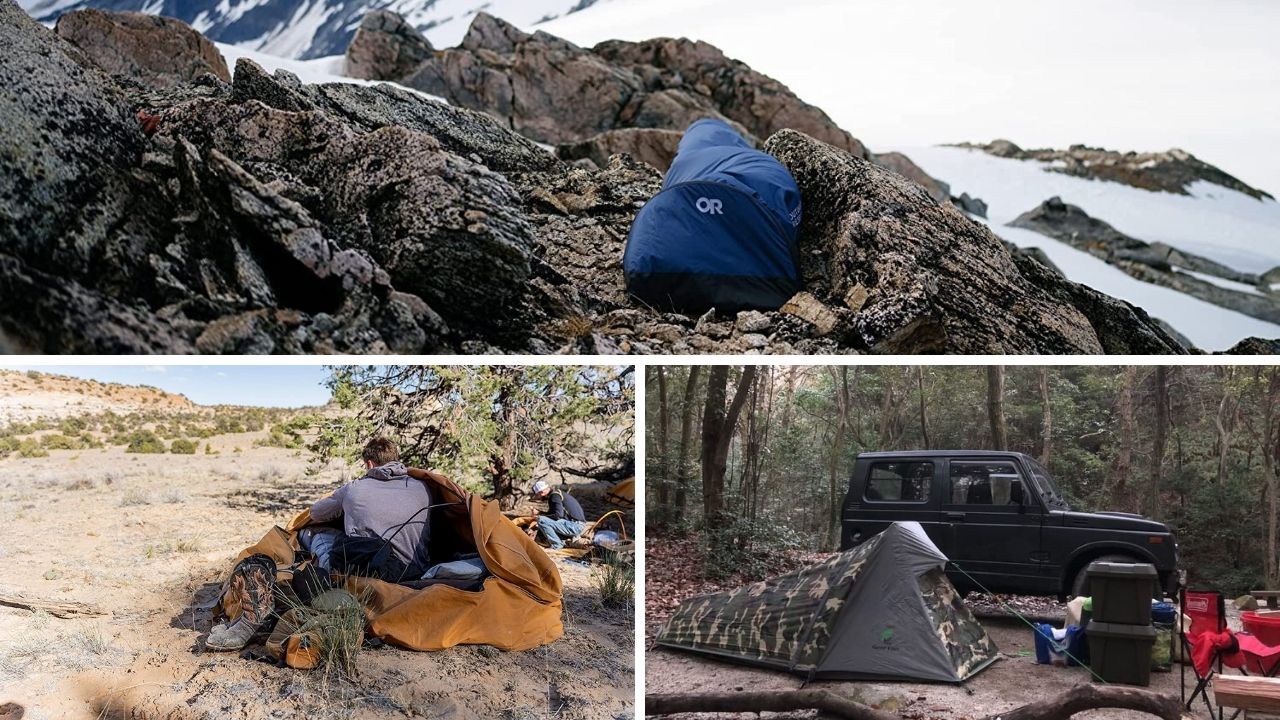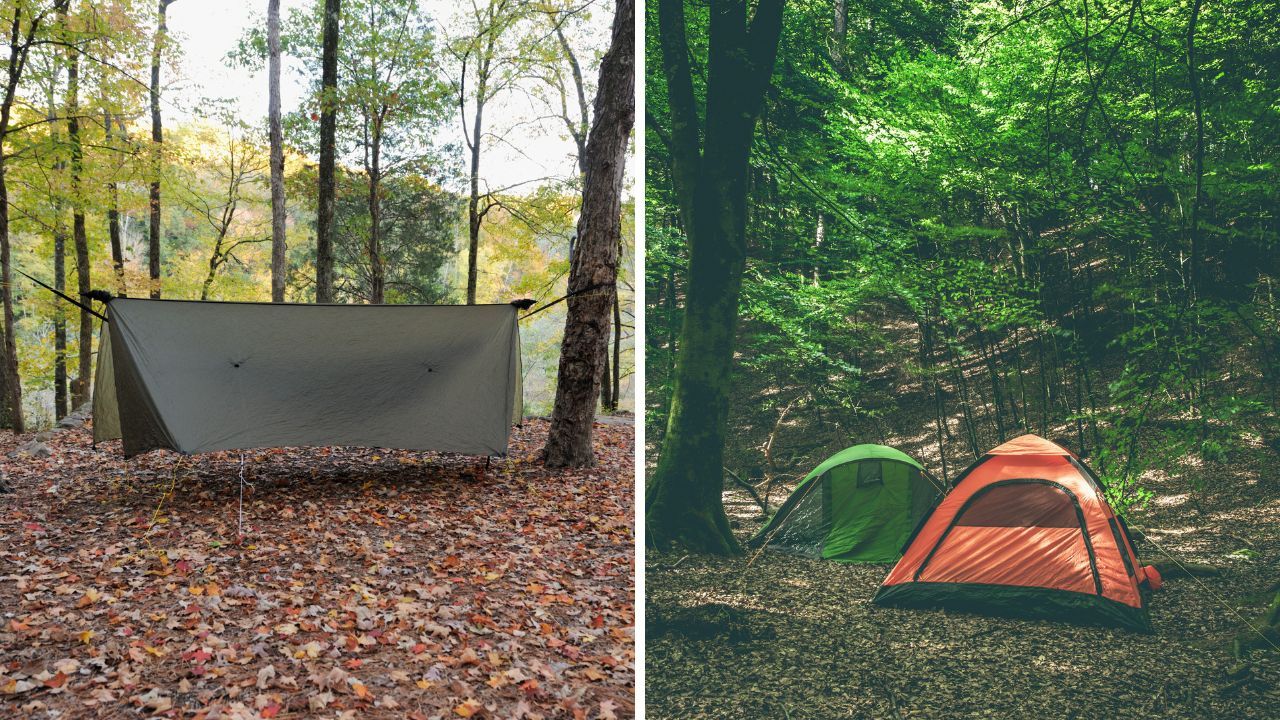
Tarp vs Tent: Weighing the Pros and Cons
Discover the benefits of both worlds in our 'Tarp vs Tent' showdown. Which one will be your go-to for camping?
If you're reading this, chances are that you're planning a camping trip and trying to decide on the best shelter for your needs.
This decision is more important than you might think because the right shelter can make or break your outdoor experience.
Choosing between a tarp and a tent isn't just about price or trend, it's about understanding the benefits and limitations of each and matching them to your camping style and conditions.
So let's take a look and explore these two popular options to help you make an informed decision.
Understanding Tents
First up, let's talk tents.
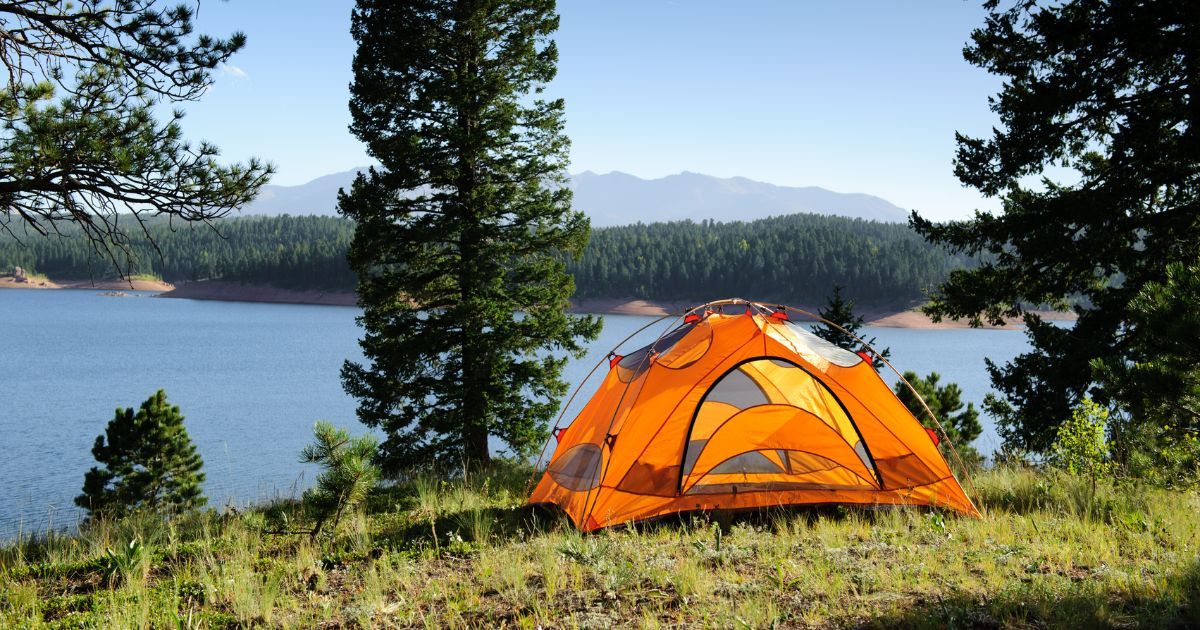
Tents come in all shapes and sizes, from small one-person tents perfect for solo backpacking trips to large family tents that can comfortably sleep 8 people or more, and everything in between.
One key aspect of a tent that you should be aware of is a footprint, which is essentially an extra barrier between the ground and the tent.
- This footprint protects the tent floor.
- It also acts as insulation between you and the cold, damp ground.
This is especially important in wet or snowy conditions, where moisture seeping into the tent could quickly ruin your camping adventure.
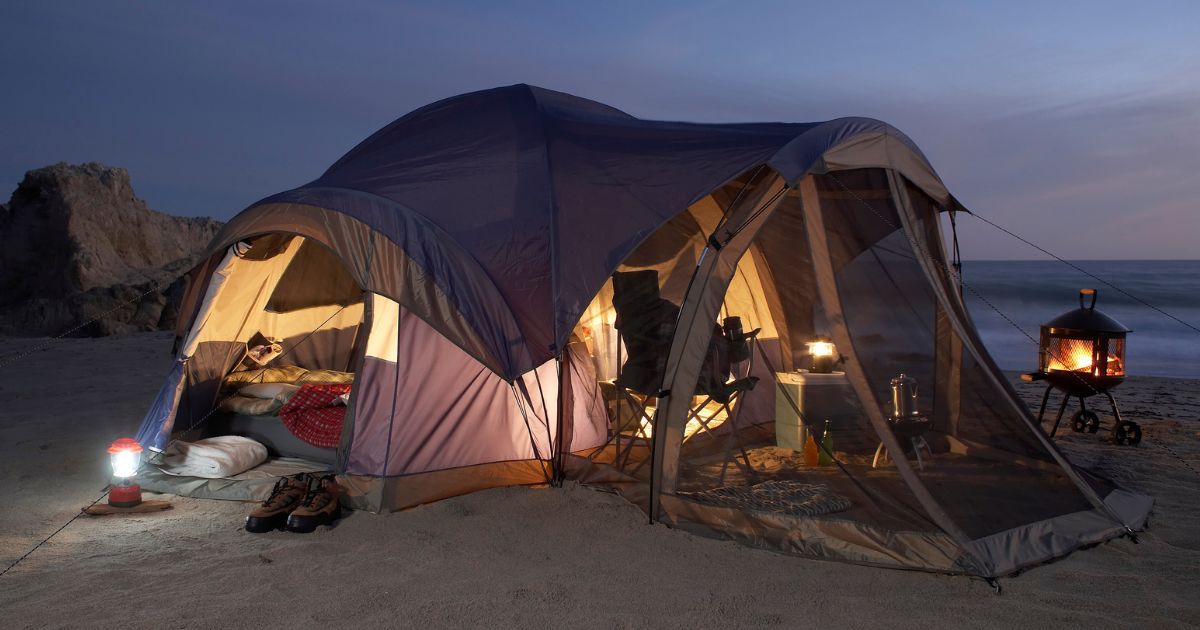
There are also various types of tents designed for different camping styles.
- For example, a car camping tent is generally larger and offers more headroom and comfort features but is heavier, making it unsuitable for backpacking.
- On the other hand, a backpacking tent is lightweight and compact but may sacrifice some comfort for portability.
So why might a tent be a good idea?
Well, tents offer a high level of protection from the elements, including wind, rain, and bugs. They also provide a private, enclosed space which some campers prefer.
However, tents are not without their downsides.
They can be heavy to carry, difficult to set up, and their floors can be prone to damage from sharp objects.
But don't worry, we'll dive deeper into these pros and cons later in the article. For now, let's turn our attention to tarps.
Understanding Tarps
Now, let's switch gears and talk about tarps.
When it comes to camping, tarps are often used as lightweight, minimalist shelters. Unlike tents, tarps have open sides which can give you a greater connection with the great outdoors.
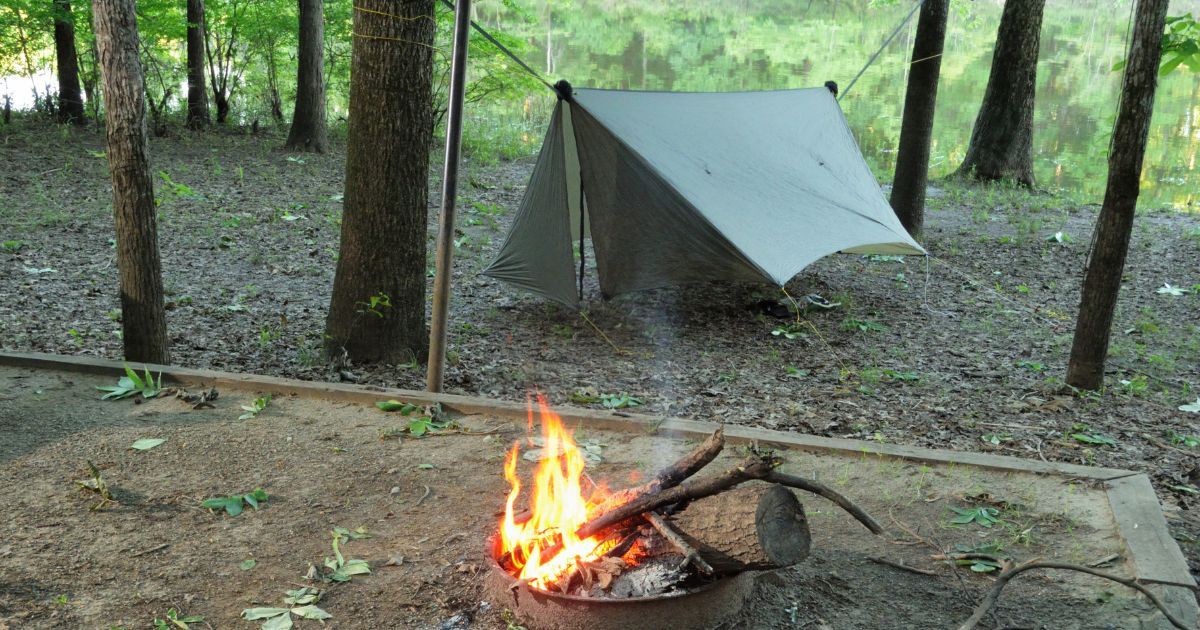
There are two main types of tarps used in camping: flat tarps and tarp tents.
- Flat tarps are simply square or rectangular pieces of material that can be pitched in various ways using trekking poles, trees, or other available supports.
- Flat tarps are commonly used with hammocks to avoid having to sleep on the bare ground.
- A tarp tent, on the other hand, are shaped tarps designed to be set up in a specific way, often resembling a tent shape.
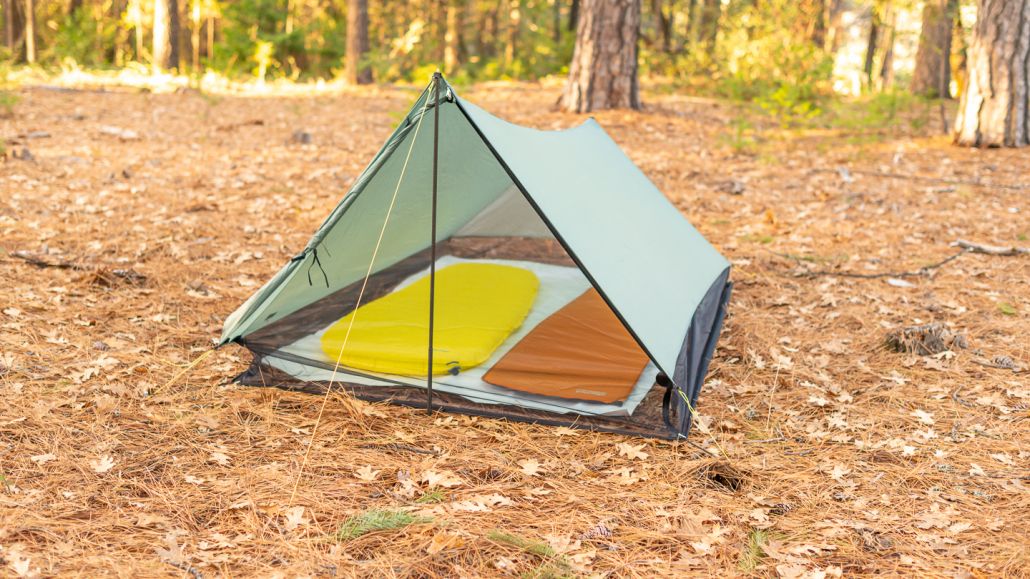
Setting up a tarp can be as simple or as complex as you want it to be.
You can create anything from a basic lean-to shelter to a more elaborate setup with multiple attachment points providing coverage from multiple sides. It's all about creativity and adaptability with tarps.
So why consider tarp camping?
For starters, tarps are generally lighter and more compact than tents, making them a favorite among ultralight backpackers.
They also offer more flexibility in terms of setup and can be adapted to a wide range of environments.
Plus, nothing beats the feeling of sleeping under the stars!
Key Factors in Choosing Between a Tarp and a Tent
Alright, now that we've covered the basics of tents and tarps, let's talk about some key factors you should consider when choosing between the two.
- First and foremost, personal preference plays a huge role in your decision. Some people love the coziness and protection offered by tents, while others prefer the openness and flexibility of tarps.
- Next, you should consider the weather conditions you're likely to encounter. If you expect heavy rain, snow, or high winds, a tent might be your safest bet.
- On the other hand, if the weather is mild and bugs aren't a major concern, a tarp can provide a wonderful, open-air experience.
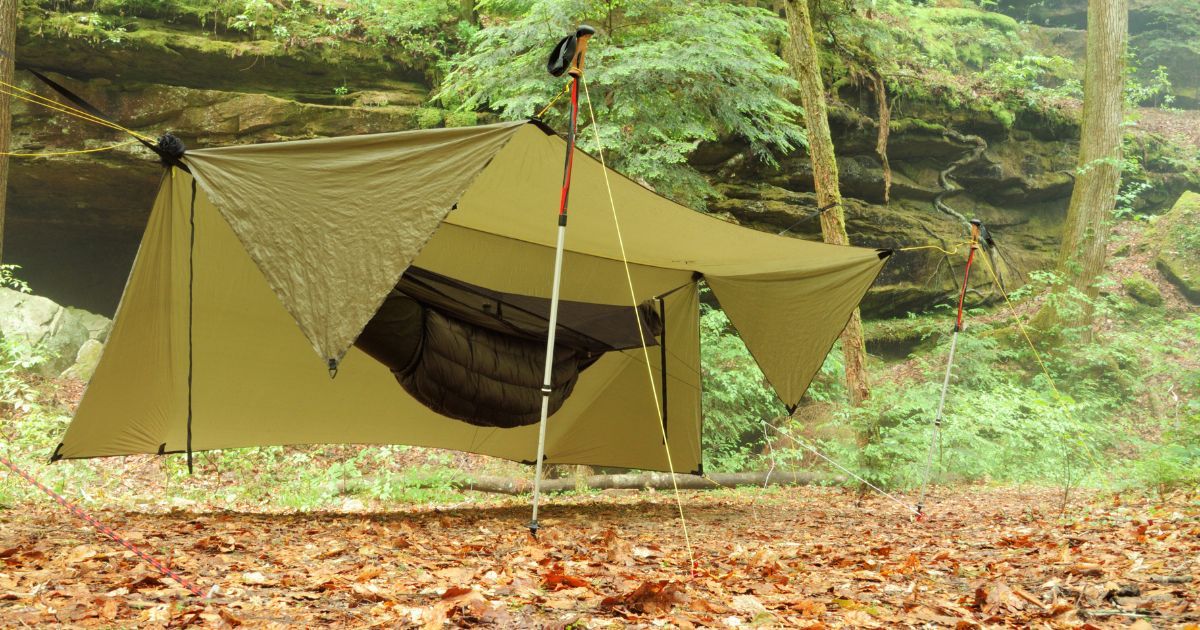
Weight is another crucial factor, especially for backpackers.
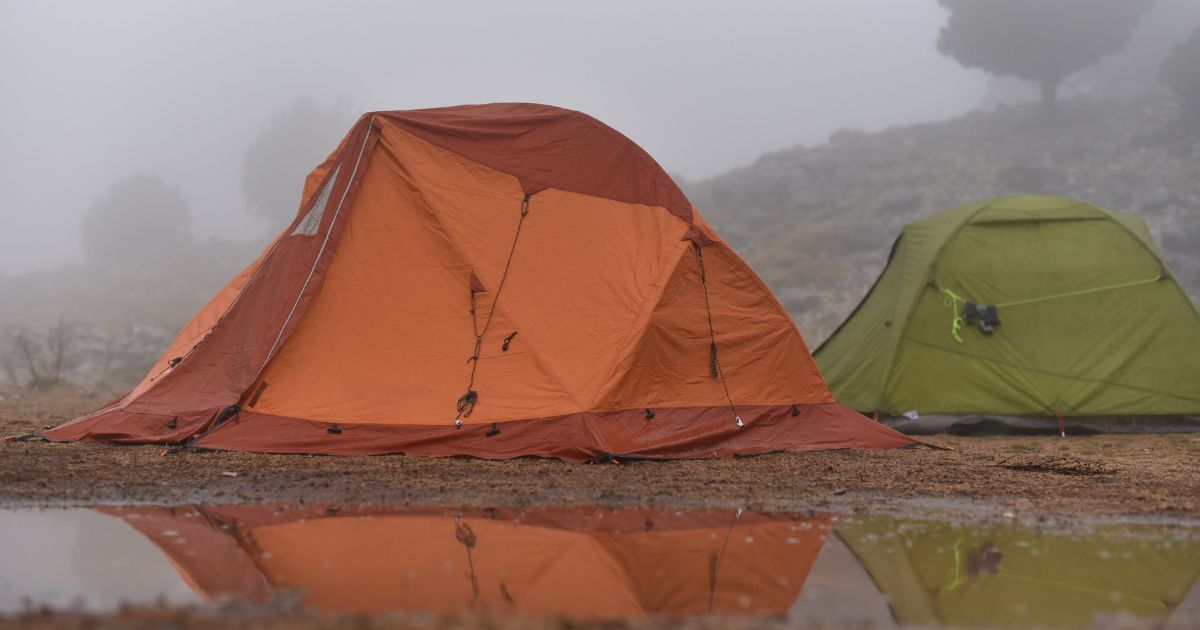
Last but not least, consider the waterproofness of your potential shelter.
- Both tents and tarps come in a range of materials with varying levels of water resistance. Make sure to choose a material that can stand up to the conditions you'll be camping in.
- Silnylon and Dyneema are popular options for tarps, while polyester and nylon are commonly used for tents. A silnylon tarp is going to be your lightest option, with some weighing in at 10 ounces.
- If you are working within a budget, a hardware store tarp might seem like a practical option. However, it's worth noting that they tend to be noisy, heavier, and less compact when packed away.
Pros and Cons of Tents and Tarps
Now that we've covered some key factors in choosing between tents and tarps, let's
Remember, there's no one-size-fits-all answer here.
The best shelter for you depends on a variety of factors including your personal preferences, the environment you'll be camping in, and the type of camping you'll be doing.
So take your time, weigh your options, and make the choice that feels right for you.
Advantages of Using a Tent
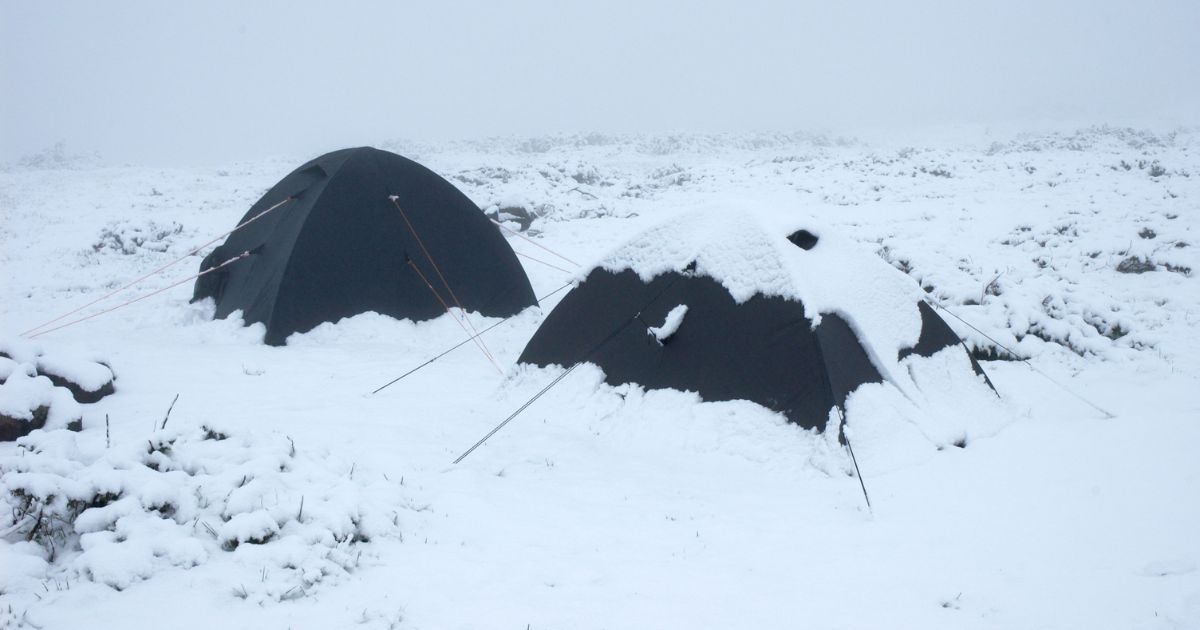
Now, let's delve into the advantages of using a tent when camping.
Built with enclosed walls and a roof, a double-wall tent can shield you from wind, rain, and even snow. This is particularly handy if you're camping in unpredictable weather or during the colder months.
The floor of a tent adds an extra layer of protection, keeping you dry even when the ground is wet or covered in snow. A good quality tent floor can also help to insulate your sleeping area, making your camping experience more comfortable.
Tents are suitable for a wide range of weather conditions. Whether you're camping in a hot desert or a cold mountain, there's a tent designed to handle that specific climate.
Lastly, let's not forget about the comfort factor.
Tents offer a sense of homely comfort that's hard to beat. They provide privacy, a controlled environment, and a cozy space to relax after a long day of outdoor adventures.
Advantages of Using a Tarp
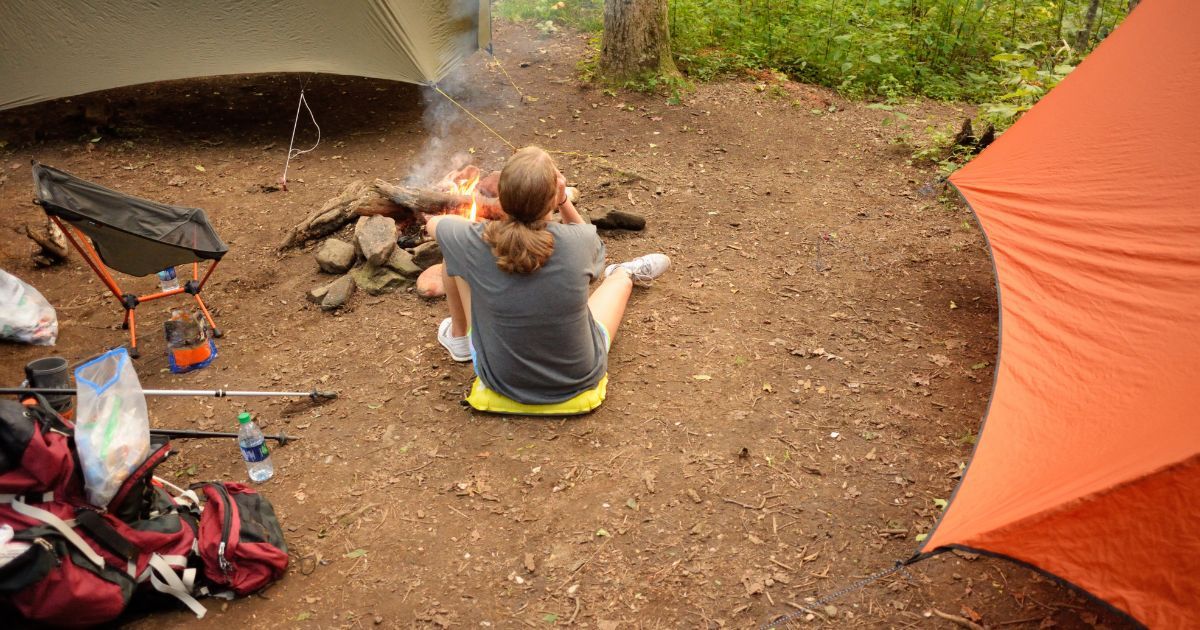
On the other hand, tarps offer their own unique set of advantages.
Need a quick sunshade? No problem.
Want a shelter that blocks wind from one side? You got it.
If you opt for a larger tarp, you'll have even better coverage and more setup options. This can be useful in areas with unpredictable weather, as you can adjust your setup on the fly.
For those who love the great outdoors, a camping tarp offers the joy of open-air sleeping. There's nothing quite like falling asleep under the stars and waking up to the sounds of nature.
Another benefit is the avoidance of dealing with a wet tent wall. The open design facilitates ample airflow, effectively preventing the formation of condensation.
And if you're worried about bugs, don't be. A bug net can easily be added to your tarp setup, giving you protection from pesky insects while still enjoying the openness of a tarp shelter.
When to Choose What: Scenarios and Recommendations
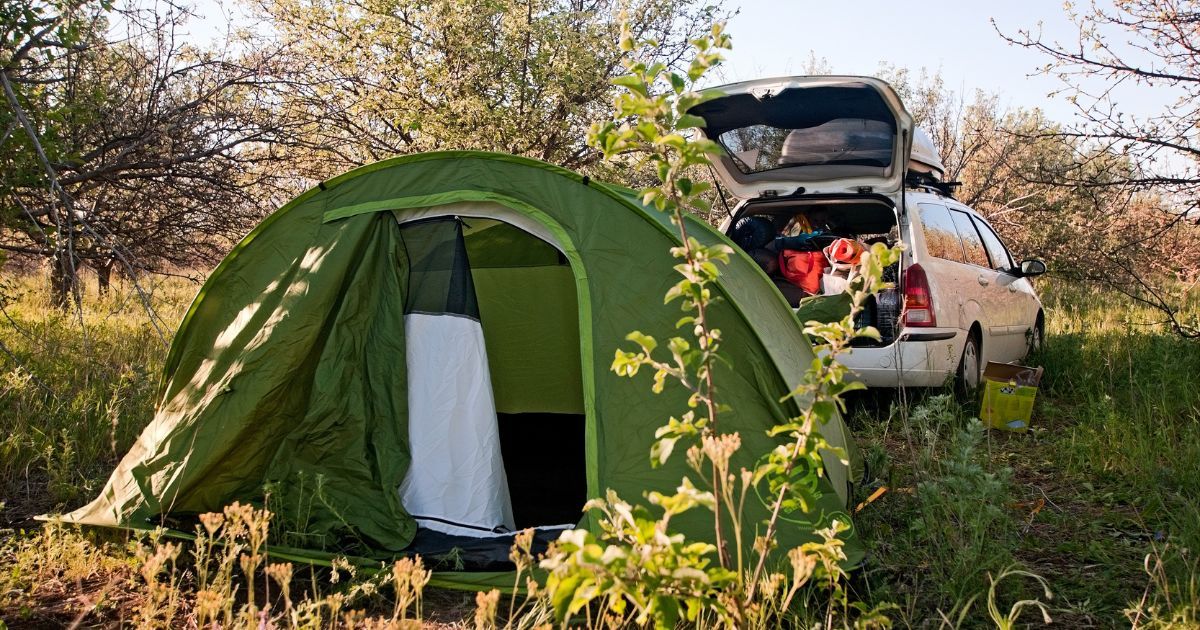
Now that we've covered the basics, let's talk about some specific scenarios and which shelter might be the best choice.
- Survival Shelter: In a survival situation, both a tent and a tarp can be lifesaving shelters. However, a tarp may offer more versatility. It can be quickly adapted to different situations and environments. Plus, it's lightweight and compact, making it easy to carry in a survival kit.
- Car Camping: For car camping, a tent is typically the better choice. They offer more comfort and space, which is less of a concern when you don't have to carry your gear far from your vehicle. Plus, tents provide better privacy and protection from bugs, which can make your camping experience more enjoyable.
- Backpacking Trips: For backpacking, the decision between a tent and a tarp often comes down to weight and personal preference. Tarps are generally lighter and can be a great choice for ultralight backpackers. However, some people prefer the comfort and protection of a tent. Consider the weather, terrain, and how much weight you're willing to carry.
Additional Gear to Consider
No matter which shelter you choose, there are a few additional pieces of gear that can enhance your camping experience.
- Sleeping Bags and Bivy Sacks: A good sleeping bag is essential for staying warm during the night. For extra protection, consider a bivy sack - a small, lightweight shelter that's designed to fit around your sleeping bag.
- Bug Net: If you're camping in an area with lots of bugs, bug netting can make all the difference. It can easily be added to your tarp setup or used inside a tent for extra protection.
- Groundsheet/Footprint: A groundsheet provides an additional layer of protection between you and the ground, helping to keep your shelter clean and dry. Some tents come with built-in grounds
- Guy Lines: These are used to secure your shelter and make it more stable. They're especially important if you're using a tarp, as they allow you to create different setups.
- Body Heat Retention: Remember, retaining your body heat is crucial when camping. This means choosing a good sleeping pad, wearing appropriate clothing, and eating enough calories to fuel your body's heat production.
Frequently Asked Questions
Why use a tarp instead of a tent?
A tarp is lighter and easier to carry than a tent, making it great for backpacking trips. Plus, it allows you to enjoy more fresh air and nature views while keeping you protected from the rain.
Is a tarp tent better than a tent?
A tarp tent is not necessarily better than a regular tent, it depends on your needs. If you want something light and flexible, go for a tarp tent, but if you need more protection from wind and rain, a regular tent might be better.
Can you use a tarp instead of a tent?
Yes, you can use a tarp instead of a tent for camping. It's lighter, more flexible and lets you enjoy the outdoors more, but might not protect as well in bad weather.
Is a tent or tarp better for winter?
For winter, a tent is usually better because it blocks the wind and traps some heat to keep you warmer. But remember, a tarp can still work if the weather isn't too harsh.
Final Thoughts
Well, there we have it. We've covered the ins and outs of two popular shelter options for camping: tents and tarps.
Just to recap, tents offer excellent protection from the elements, a sense of homely comfort, and are suitable for a wide range of weather conditions. They're typically the better choice for car camping or when comfort and privacy are top priorities.
Tarps, on the other hand, provide flexibility in setup, the joy of open-air sleeping, and tend to be lighter and more compact. They're a great option for survival situations, ultralight backpacking, or any time you want to feel a bit closer to nature.
The most important thing is to choose the option that best suits your needs and the specific conditions of your trip.
After using both methods over the years, I usually prefer the comfort and protection of double-walled tents. I don't mind carrying the extra wait for a good night's sleep.
Remember, there's no right or wrong answer here - just different options for different adventures. So whether you're a tent enthusiast or a tarp aficionado, get out there and enjoy your time in the great outdoors!
Now it's your turn! I'd love to hear about your personal experiences with tarps and tent camping. Do you have a favorite? Any tips or tricks you'd like to share? Feel free to drop a comment below.
Happy camping, everyone!
Before You Go...
